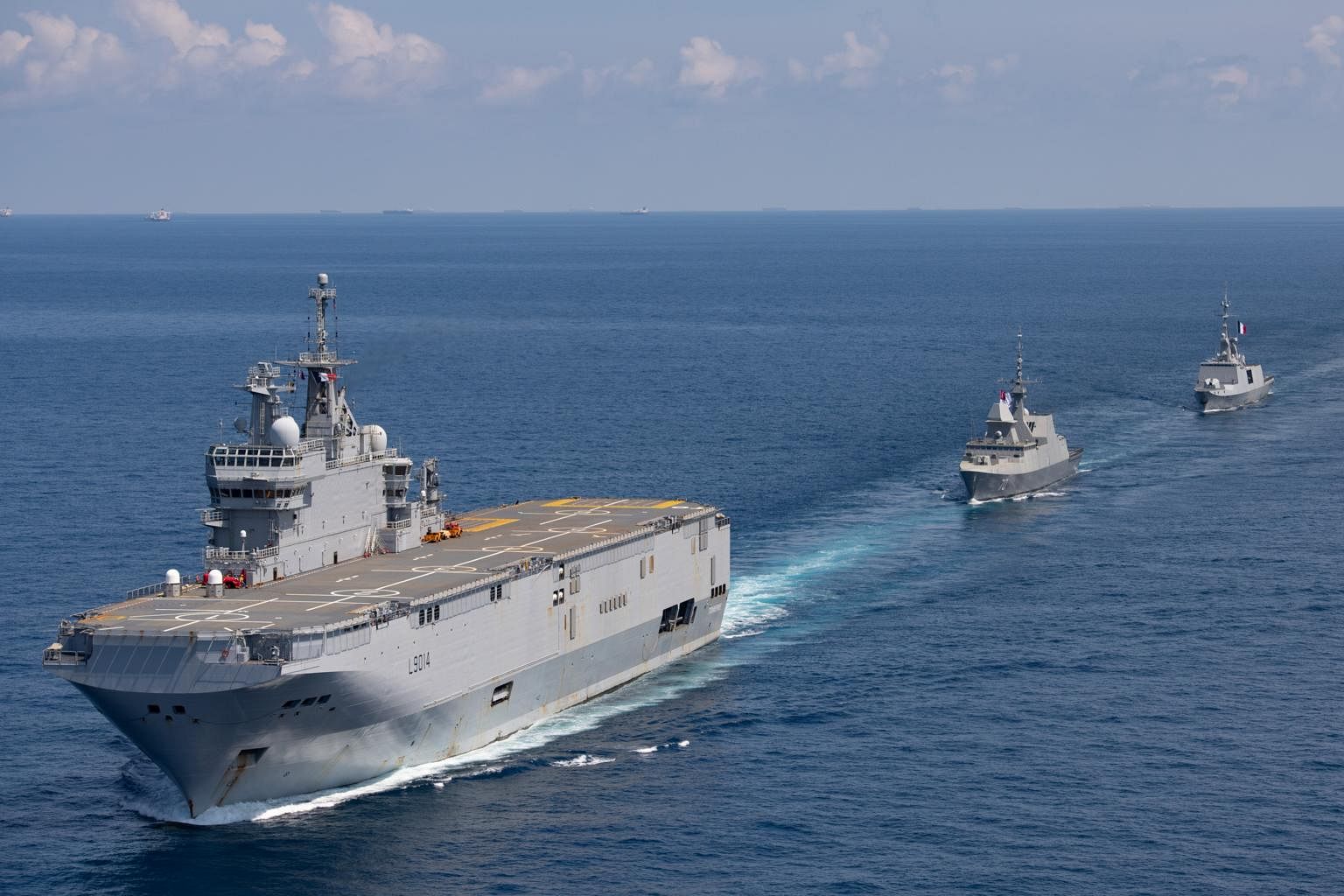French assault helicopter carrier docks at Changi as European interest in Asia-Pacific grows
SINGAPORE – French assault helicopter carrier LHD Tonnerre is docking at Changi Naval Base on Friday (May 28) and Saturday as it nears the end of a five-month mission to train its cadet officers to operate in unfamiliar areas.
Its venture to this region has included large-scale amphibious operations with Japan, the United States and Australia, and comes amid greater interest in the Asia-Pacific shown by European powers, including the first deployment of a German frigate to the region later this year.
On Thursday, LHD Tonnerre conducted a military exercise with the Singapore navy and air force. On board were 150 cadets, of whom 15 are non-French, from countries like Indonesia, Vietnam and Malaysia.
French Ambassador to Singapore Marc Abensour emphasised at a press conference on Friday that French deployments are not targeted at any particular country.
“Our presence in the region, including in the South China Sea, is part of our commitment to the freedom of navigation, freedom of flight, and the right to innocent passage in the South China Sea, as it should be (the case) everywhere else in the world”.
“We think that the more we can express our commitment to these key principles, the more we can make that region even safer. At the same time, we are not taking part in the disputes in the South China Sea, and we call on the parties to peacefully resolve these disputes in accordance with the rules.”
Territories in the South China Sea are claimed by China, Taiwan, Brunei, Indonesia, Malaysia, the Philippines and Vietnam. These are often overlapping and have at times threatened to boil over into military conflict.
The LHD Tonnerre sailed through the South China Sea as part of its five-month journey and conducted combined patrols with the Australian navy there.
Later this year, Britain, which has always been a regular presence, is also stepping up its engagement in the Asia-Pacific by deploying its new aircraft carrier HMS Queen Elizabeth. Once there, it will be joined by US jet fighters and a US navy destroyer.
Dutch vessels could also sail into the region in the near future, although this has not yet been finalised.
Responding to a question about whether there was a “concerted” European effort to increase or maintain European naval presence in the Asia-Pacific, Mr Abensour called the increased Western presence “a very positive development”. He stressed, however, that he was not aware of any planned effort for this within the North Atlantic Treaty Organisation (Nato) framework.
He added: “But it’s true that there is a growing interest, and it’s all for the Indo-Pacific, because there are some security issues of a global dimension that can be addressed by Nato.”
The exercise with the Singapore navy and air force on Thursday was divided into two parts. Two Republic of Singapore Air Force Super Puma helicopters first landed on the LHD Tonnerre and trained on board, before other elements were brought in for gunnery and manoeuvring exercises.
LHD Tonnerre commanding officer Arnaud Tranchant said the training should improve the interoperability of the two countries’ military forces while also being “a great opportunity for our cadets to learn how to work in a multinational context”.
Over the last few months, LHD Tonnerre cadets have conducted training in Djibouti, participated in an anti-smuggling operation in the north-west Indian Ocean, and made calls in India and Japan.
Mr Abensour said relations between Singapore and France “have reached a very high level of trust”, allowing both countries to cooperate in a wide range of areas even amid Covid-19.
He said France will continue to engage with regional organisations like Asean on issues like peacekeeping and maritime security, and remains committed to joining organisations like the Regional Cooperation Agreement on Combating Piracy and Armed Robbery against Ships in Asia (ReCaap).
Mr Abensour added that France wants to help resolve regional crises, strengthen ties with like-minded countries and countries with which it has a strategic partnership, and work together with Asian countries to solve global issues like health and climate change.
He reiterated: “What is probably the most important feature that you should keep in mind is that the strategy is characterised by inclusiveness, so it’s not directed at any country in the region. It’s not trying to contain any country in the region.”
Join ST’s Telegram channel here and get the latest breaking news delivered to you.
Source: Read Full Article



